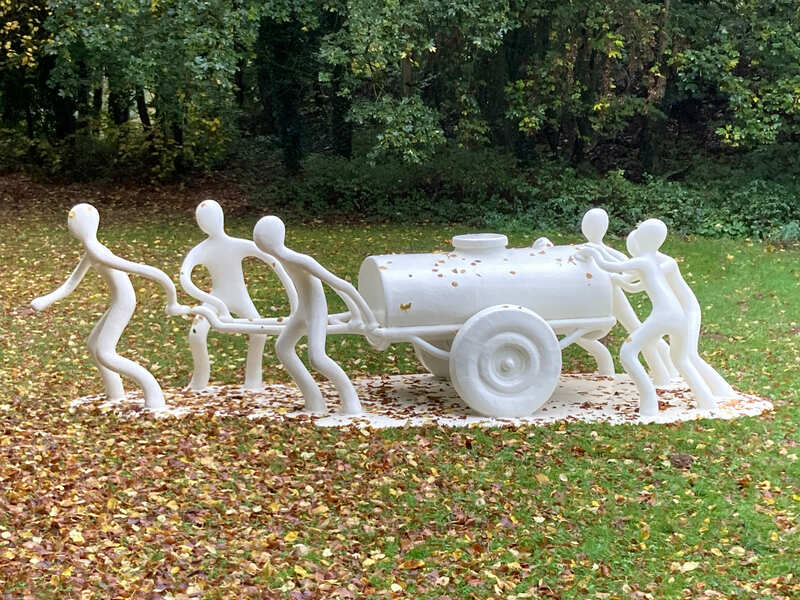Atelier Van Lieshout: “Waterwagon”
After Rebellion, Building the Future
“This piece is about working together on a new society,” explains Joep van Lieshout in his brief statement about the “Waterwagon.” While the whole exhibition is called “Rebellion,” this sculpture offers a perspective on walking and working together as insurrection does not create new realms fostering life, communion, peace, and justice.
Water is the most fundamental element of life. While we find it in nature, the sculpture presents it in a wagon: people need to take on the journey what they need for life. Who are these people? Where does their journey lead to? For what distance will the reservoir be enough? Where can they fill up the wagon? The sculpture expresses something of Van Lieshout’s philosophy: while most artists sign with their name, “the studio moniker exists in Van Lieshout’s practice as a methodology toward undermining the myth of the artistic genius.” In this sense “Waterwagon” is a meditation on art and those who produce it.
One may also connect the sculpture directly to Luxembourg as a hyper-diverse society: almost 50% of Luxembourg’s population are not citizens, and Luxembourg city has some 30% Luxembourgers. In the tram, there are many languages spoken that one cannot hope to identify all. Cultures and religions form a colorful mosaic. Luxembourg is small but truly international. Who will be the ones who form the people of the “Waterwagon”? The question is quite urgent as poverty affects already too many people in the city, threatens the lives of individuals and families as well as social cohesion. People start missing “Water.” Who can fill the reservoir? Where? Van Lieshout’s sculpture invites visitors to explore different stories with their imaginations, breaking out of the theoretical boundaries.
The work is shown in front of the Centre Jean XXIII, the home of the Luxembourg School of Religion & Society, an institution of research and higher education that works as a laboratory gathering people of different nationalities, faith traditions, and worldviews. With different disciplines and academic cultures, these people work together on projects linked to societal challenges. The LSRS is a unique institution in Luxembourg and the Grande Région. It recreates something of the hyper-diversity of our society almost like a test tube; it provides a space where interactions between members are taken seriously, examined, and appreciated as part of the cognitive process. Could one consider the LSRS as an expression of the “Waterwagon,” an atelier for a new way of relating to religion, research, and society?
This artwork is on display until November 23rd, 2023, at the Centre Jean XXIII, 52, rue Jules Wilhelm in L-2728 Luxembourg. For any information, please call +352 43 60 51.
 Waterwagon, 2007 Atelier Van Lieshout
Waterwagon, 2007 Atelier Van Lieshout